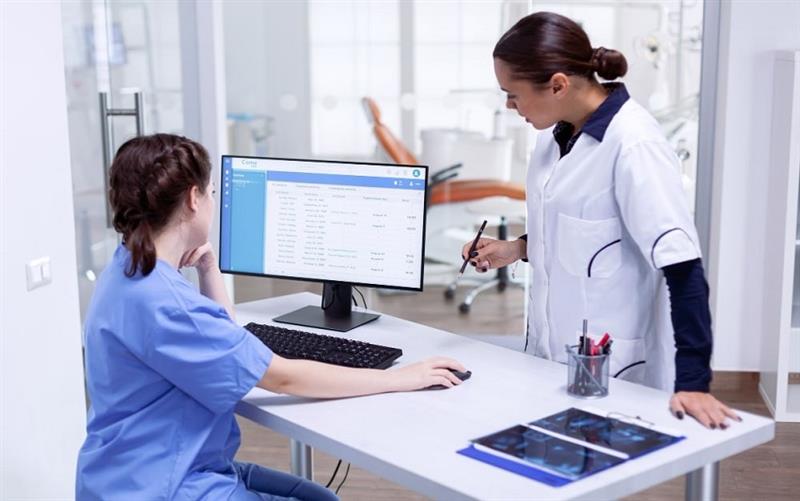
Revolutionizing medical decision support with multifunctional software holds immense promise for improving patient outcomes, streamlining healthcare processes, and enhancing overall efficiency in the medical field. Multifunctional software has the potential to revolutionize medical decision support by harnessing the power of data, analytics, and technology to empower healthcare providers, optimize clinical workflows, and ultimately improve patient outcomes. However, it's crucial to address challenges such as data privacy, security, usability, and regulatory compliance to ensure the successful implementation and adoption of such systems in clinical practice.
Here's a breakdown of how such software could make a significant impact:
1. Comprehensive Patient Data Integration:
Multi-functional software can aggregate and integrate data from various sources including electronic health records (EHRs), medical imaging, genetic information, wearable devices, and patient-reported outcomes. This holistic view of patient data allows for more informed decision-making by healthcare providers. Comprehensive patient data integration is a foundational aspect of modern healthcare systems, enabling healthcare providers to access, analyze, and utilize diverse sources of patient information to deliver personalized and effective care. Here's how it works:
i. Electronic Health Records
ii. Medical Imaging
iii. Wearable Devices and Remote Monitoring Tools
2. Advanced Analytics and Machine Learning:
Leveraging machine learning algorithms, the software can analyze vast amounts of patient data to identify patterns, trends, and correlations that may not be immediately apparent to human clinicians. This can aid in early detection of diseases, personalized treatment planning, and predicting patient outcomes. Advanced analytics and machine learning are key components of multifunctional medical decision support software, offering powerful tools for processing and deriving insights from large volumes of patient data. Here's how these technologies are utilized:
i. Data Mining and Pattern Recognition
ii. Predictive Modeling
iii. Image Analysis and Interpretation
3. Clinical Decision Support Systems (CDSS):
By integrating evidence-based guidelines, best practices, and clinical protocols, the software can provide real-time decision support to clinicians at the point of care. This assists healthcare providers in making informed decisions regarding diagnosis, treatment options, medication selection, and dosage recommendations. Clinical Decision Support Systems (CDSS) play a crucial role in healthcare by providing clinicians with timely, evidence-based information and recommendations to enhance clinical decision-making at the point of care. Here's how CDSS function and their benefits:
i. Integration of Patient Data
ii. Real-Time Decision Support
iii. Personalized Recommendations
4. Risk Prediction and Stratification:
The software can assess individual patient risk factors and stratify patients into different risk categories for various diseases and conditions. This enables proactive interventions and preventive measures to be implemented, ultimately reducing the likelihood of adverse health events and hospital readmissions. Risk prediction and stratification are critical components of clinical decision support systems (CDSS) that help healthcare providers identify individuals who are at higher risk of developing certain diseases or experiencing adverse health events. Here's how risk prediction and stratification work within CDSS:
i. Predictive Analytics
ii. Data Analysis
iii. Risk Assessment Models
5. Telemedicine and Remote Patient Monitoring:
Incorporating telemedicine capabilities, the software facilitates remote consultations between patients and healthcare providers, enabling timely access to care, especially for individuals in remote or underserved areas. Additionally, the software can support remote patient monitoring, allowing clinicians to track vital signs, symptoms, and adherence to treatment plans outside of traditional healthcare settings. Telemedicine and Remote Patient Monitoring (RPM) are essential components of modern healthcare delivery, facilitated by multifunctional software. Here's how telemedicine and RPM work within such systems:
i. Telemedicine Consultations
ii. Chronic Disease Management
iii. Expanded Access to Care
6. Interoperability and Collaboration:
Ensuring interoperability with existing healthcare IT systems, the software promotes seamless data exchange and collaboration among healthcare providers across different specialties and organizations. This facilitates care coordination, reduces duplication of efforts, and enhances continuity of care for patients. Interoperability and collaboration are vital aspects of multifunctional medical decision support software, ensuring seamless data exchange and communication among healthcare providers, systems, and organizations. Here's how they contribute to improved patient care:
i. Data Exchange
ii. Care Coordination
iii. Standardization of Data Formats
7. Continuous Improvement and Learning:
By collecting feedback from users and analyzing outcomes data, the software can continuously improve its algorithms, recommendations, and user interface to better meet the evolving needs of healthcare providers and patients. This iterative process of learning and refinement is essential for the ongoing success and adoption of the software. Continuous improvement and learning are essential principles for the ongoing enhancement and optimization of multifunctional medical decision support software. Here's how these processes are facilitated:
i. User Feedback Mechanisms
ii. Iterative Development Cycles
iii. Data Analytics and Performance Metric
8. Patient Engagement and Education:
The software can include patient-facing features such as portals, educational resources, and interactive tools to engage patients in their own care. This empowers patients to make informed decisions, adhere to treatment plans, and manage their health more effectively between clinical visits. Patient engagement and education are vital components of multifunctional medical decision support software, fostering collaboration between patients and healthcare providers and empowering patients to actively participate in their own care. Here's how the software can facilitate patient engagement and education:
The software provides patients with access to personalized health information tailored to their specific medical conditions, treatment plans, and preferences. This may include educational materials, videos, interactive tutorials, and FAQs to help patients better understand their health conditions, medications, and treatment options.
i. Health Tracking and Monitoring
ii. Appointment Scheduling and Reminders
iii. Secure Communication Channels